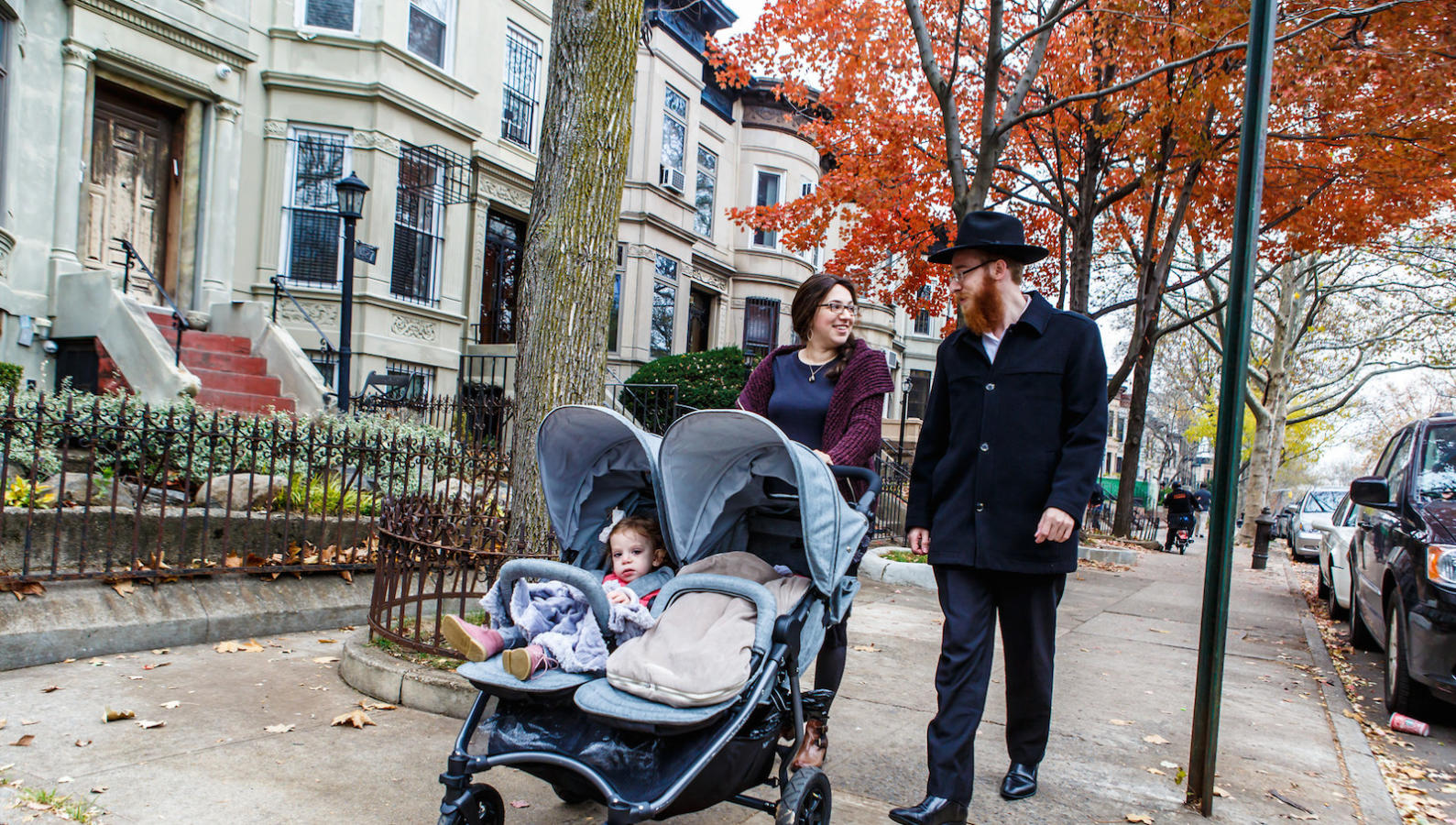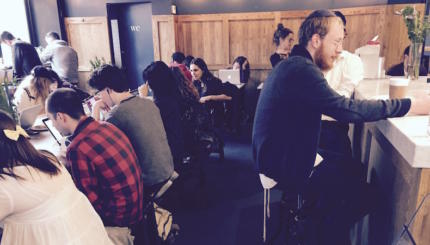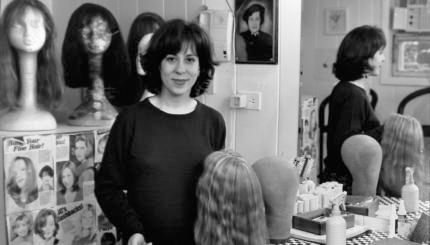When Connecticut senator Joseph Lieberman became the Democratic vice presidential candidate in 2000, the public suddenly turned its attention on Orthodox Judaism, with pundits and journalists explaining the dos and don’ts of Shabbat and dietary laws. But Lieberman himself eschewed the label “Orthodox” in favor of the less denominational “observant,” and many within the Orthodox community disliked the fact that Lieberman became, in the world’s eyes, the example of the Orthodox life.
More recently, President Donald Trump’s Jewish daughter and son-in-law, Ivanka Trump and Jared Kushner, also have made “Orthodox” a household word — and drawn some criticism for compromises in their observance.
Lieberman, in many ways, represents an Orthodox Judaism of decades past, one that integrated more seamlessly than today’s Orthodoxy with mainstream, secular society. Orthodox Jews since the 1970s have grown greatly in numbers, self-confidence, and public profile; at the same time, they have shifted to the right socially and religiously, refusing to make what they see as the compromises that their parents’ and grandparents’ generations made to fit into American society.
The outward signs might be subtle but they are not insignificant — the fact that Lieberman doesn’t wear a yarmulke and that he sometimes voted in the Senate on , even if he did walk home afterward. It is less likely that tomorrow’s Orthodox politician will do likewise, a tension that came to the fore when Lieberman was criticized by some Jews for drinking water during the Tisha B’Av fast.
With your help, My Jewish Learning can provide endless opportunities for learning, connection and discovery.
‘Haredization’
The Orthodox world often divides into two major categories, generally referred to as (or sometimes, ultra-Orthodox) and centrist, or modern, Orthodox. But in recent years, the line between haredi and Orthodox has blurred. Many Modern Orthodox Jews are increasingly stringent in their adherence to Jewish law and express a growing sense of alienation from the larger, secular culture. Some scholars have even referred to the trend as the “haredization” of Orthodoxy, and some believe that Modern Orthodoxy is essentially dead.
Orthodoxy today is more strictly observant and better educated than at any point since before the destruction of Eastern European Jewry during the Holocaust. Children in Orthodox families are maintaining and increasing their allegiance to traditional Judaism and increasing numbers of non-Orthodox Jews are finding themselves attracted to Orthodoxy.
Reasons for the Shift
The fact that Orthodox Judaism is, in the words of historian Jonathan Sarna, the “great success story of late 20th-century American Judaism” may seem surprising; a religion that believes in strict adherence to rules and rituals thrives at a time when personal choice seems to reign as the cultural norm. But traditional religious values can be said to be the great success story of many major religious groups since the 1970s; witness the phenomenal rise of evangelical Christianity and Mormonism as examples. In Judaism, the Reform movement, long so averse to tradition that the wearing of yarmulkes was officially barred from some synagogues, has itself embraced a more traditional path of observance.
The shift to the right is a product of many factors. Traditional religious groups tend to be more aggressive–and successful–in proselytizing for new members. While Orthodox Judaism rejects proselytizing non-Jews, it does embrace kiruv, the concept of working to convince non-observant Jews to adopt a more traditional lifestyle. Through organizations like the National Council of Synagogue Youth (NCSY), Chabad Lubavitch, Aish Ha , and others, many non-Orthodox Jews have been brought into the Orthodox fold in recent decades.
In addition, the rise of conservative religion is likely a reaction against the increased permissiveness and anything-goes attitude of secular culture. Boundaries and rules attracted many people today just as the removal of such behavioral limits attracted the youth of the ’60s and ’70s.
Orthodoxy also has higher birthrates than other Jewish communities; sends a much-higher percentage of its children to Jewish day schools; has a much lower intermarriage rate (and children of intermarriages have a higher likelihood of being uninvolved in Jewish life); and generally have a much higher rate of participation in Jewish life–all factors that help to strengthen Orthodox communities and make it attractive for non-Orthodox Jews to join.
And the Orthodox Jewish lifestyle is easier than ever before. The affluence most Jews have achieved–together with changing societal norms–makes working on Shabbat less of a necessity. The plethora of food in supermarkets worldwide eases observance of the dietary laws, and the growth of kosher restaurants in many cities reduces the inclination among many Orthodox Jews to eat in non-kosher establishments. Religious book and CD publishing is thriving and an industry of Jewish-items producers seems to make observance ever-simpler, with innovations such as a snap-together sukkah, Shabbat-friendly kitchen appliances, and Passover-kosher food from pizza to granola bars to hamburger buns.
Stringency
Orthodox Jews are today reviving customs and laws that had been virtually forgotten for decades except among haredim. Increasing numbers of married women in Orthodox communities are covering their hair–either with hats or wigs–a Jewish law that was hardly observed among most Modern Orthodox women since the days of the in Europe. Kosher restaurants and caterers often need to pay for multiple kosher-certification certificates, each from an agency or rabbi with somewhat different standards, to convince all customers of their acceptability.
The shift is in culture and not just halachic (Jewish law) observance. After high school, many Orthodox teens spend a year studying in in Israel, and increasingly, one year is turning into two, three, or even more. When they return, these are expressing ever-deeper discomfort with secular college life–socially because of the culture of sexual permissiveness and intellectually because of their discomfort with academic teachings on subjects like the Bible and the nature and history of religion.
Politically, too, the Orthodox world increasingly supports conservative policies on such issues as school choice (vouchers) and public funding of faith-based charities. When it comes to Israel, the trend is perhaps more pronounced, with American Orthodox Jews overwhelmingly advocating right-wing Israeli policies and candidates, some of them far to the right of what mainstream Israelis, even conservative ones, would themselves support.
The mantra of Modern Orthodoxy was for generations expressed in the motto of Yeshiva University–Torah u’Madda. The phrase literally means “Torah and science,” but is used to convey the parallel values of Jewish observance alongside engagement with the secular world. Today, though, Orthodox Jews live in world where the balance has tipped heavily in favor of Torah over madda–and in which many people have redefined “madda” as support for making one’s livelihood in the secular world, not culturally or intellectually engaging with it.
The Challenge of Feminism
As the world has changed since the 1970s–the success of feminism, the rise of the gay rights movement, laxer sexual norms–Orthodoxy has, with mixed success, tried by and large to insulate itself from such evolutions. The greatest controversies, though, have taken place over questions of women’s roles in Orthodox religious life.
In Orthodox prayer services, men and women are separated by a curtain or low wall, with only men allowed to lead services and read or bless the Torah. Women are exempt from many mitzvot (commandments) and cannot become rabbis. In some Orthodox communities, women do not study Talmud.
But feminism — combined with stronger Jewish education for Orthodox girls — has left many Orthodox women (and men) dissatisfied with traditional gender roles and restrictions. Being Orthodox, they retain their adherence to but have sought change within the limits of Jewish law — sometimes via creative re-interpretations — and also seek shifts in Jewish culture and attitude. This has resulted in bitter disputes over women’s issues.
The debate threatens to split Jewish communities while at the same time creating new opportunities for female religious participation. More synagogues are holding women-only prayer groups, allowing the Torah processional to pass through the women’s section, or taking other steps to increase women’s religious participation. And as these synagogues take these steps, they inevitably face bitter condemnation from within and without, driving a wedge between them and the mainstream Orthodox community.
For conservatives in Orthodoxy, allowing changes in women’s religious role is an unacceptable surrender to the broader secular culture; halacha and Orthodox culture are seen by them as a bulwark against the outside world and its seemingly ever-shifting values. In the eyes of Orthodox feminists, though, Jewish tradition has always engaged and been influenced by prevailing intellectual and cultural norms, strong enough to incorporate them without compromising its core values or laws. To feminists, the change in women’s status in the secular world is a monumental and permanent shift that must be reflected in Jewish life and observance; to conservatives, Jewish life and observance must be unchanging and unaffected by the cultural winds around it. Bridging that gap is difficult–possibly impossible–and reflects a profound difference in how the two sides view Judaism and its place in the world.
In the near future, Orthodoxy can expect to see continued growth and vibrancy. As more Jews become attracted to it, and as Orthodox communities retain their higher-than-average birth rates, Orthodoxy can also expect to become an increasingly large percentage of the total number of Jews. And it can also expect to continue the debates over Orthodox Jews’ place in the modern world and the place of modern notions such as feminism in Orthodox Judaism.
frum
Pronounced: FROOM (oo as in hook), Origin: Yiddish, devout or pious, generally used to identify someone as Orthodox, or strictly observant of Jewish law.



